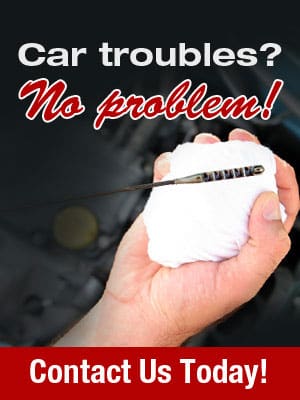At Joe’s Service Department in Indianapolis, we take pride in providing excellent service for all your car care needs. For the best quality repairs and maintenance work, make an appointment with our trusted, experienced experts, at (317) 405-8456.
Our expertise in auto repairs doesn’t stop at oil changes, tune-ups, and standard maintenance; our experts can repair and run tests on many other systems and components. We’ll replace the shocks, run diagnostics, and service the engine for many makes and models — just to name a few things.
How do I know if my car needs a tune-up?
If your car is getting lower gas mileage than it always has, you may need a tune-up. A vehicle with dirty fuel filters, bad spark plugs, or bad fuel injectors can cause significantly lower gas mileage. Squealing noises when you turn the wheel, exhaust odor, pinging sounds in the engine, and black smoke coming out of the exhaust pipes can all be clear indicators that your car is in need of a tune-up. Contact us today if you are experiencing any of these issues.
Why are regular auto tune-ups important?
An annual tune-up can prolong the life of your engine and keep your car in good shape. It can also help you maintain better gas mileage by maintaining the fuel filters and spark plugs. Read more about what to expect at an auto tune-up at Joe’s Service Department.
Why is it important to rotate my tires?
Front and rear tires wear differently because the front tires are in charge of turning the car. More pressure is put on the front tires meaning they’ll need to be rotated to extend the life of the tires. Also, tread wear should be equal on both front and rear tires, which only tire rotating can fix. Tires should be rotated every 5,000–10,000 miles, but the owner’s manual of each specific vehicle should give exact intervals for tire rotation.
How do I check my tire pressure?
You’ll first need a pressure gauge to check your tire pressure. Test your tires after the vehicle has been sitting for at least three hours. Insert the pressure gauge into the small stem sticking out of the tire. Compare the pounds per square inch (psi) of the tire to the recommended psi found within the driver’s door on your vehicle. This will tell you if you need more or less air in your tires.
How do I choose the right mechanic?
Check online reviews to get a feel for the experiences other customers have had with mechanics you’re considering. Customers often speak openly about their experiences via online forums. Talk to family, friends, or neighbors to find out who their trusted mechanic is. Another reliable source is the Automotive Service Association.
Is it okay to let my car idle during short waiting times?
Extended idling is simply wasting your gas, and it’s not doing any favors to the environment either. Every two minutes that you leave your car idling uses the same amount of fuel as driving about a mile. It is false that idling is good for your engine. According to the Consumer Energy Center of the California Energy Commission, “Excessive idling can actually damage your engine components, including cylinders, spark plugs, and exhaust systems.”
Does it matter what kind of oil I use in my car?
Yes, the type of oil you use will affect your car. Every manufacturer recommends a certain grade of oil, so you should always use the suggested grade. According to the U.S. Department of Energy, using the right grade of oil can increase your fuel efficiency by 1–2 percent. This transfers to $0.04–$0.07/gallon in savings.
Is it urgent to fix an oil leak?
If you see a puddle under your car, call an Indianapolis auto repair shop before you decide to drive the car anywhere. If you don’t fix the cause of the leak quickly, you could have a major repair on your hands. Transmission fluid, for example, keeps the transmission cool and helps the car run smoothly. Don’t ignore a leak.
Why does my engine oil appear to be a milky-brown color?
This color is an indication that coolant is in the oil. This is a serious problem that needs to be checked and fixed immediately by a professional. It could have been caused by numerous other issues that your auto repair shop will need to determine.
Why do I have to get my oil changed?
The oil is a lubricant for all the moving parts in the engine of your car. It also absorbs dirt and soot created during combustion. It then becomes difficult to move harmful particles to the oil filter. If the oil and oil filter is not changed, engine failure could occur. About every 3,000 miles, you should have an oil change.
What do I do if my car overheats?
Shut the engine off as soon as you can. From here, it’s best to have your car towed to an auto repair facility. Attempting to check the fluid level could be dangerous. If it’s too hot, it could result in severe burns.
Do I have to change my spark plugs?
Yes. Your spark plugs should be changed every 30 months or 30,000 miles. Some vehicles are equipped with 100,000-mile platinum-tipped spark plugs, which shouldn’t need to be as frequently replaced.
What do I need to do when my “check engine” light comes on?
Even if the car seems to still be working as it was before the “check engine” light came on, it is important to get the issue checked by a professional. You may have a serious problem in the long-run if you don’t take care of a potentially minor issue when it appears.
Do I need to replace my transmission, or could I repair it?
If a minor repair is needed, then it probably isn’t necessary to replace it. However, sometimes large repairs are called for, and it may just be more reasonable to replace the transmission. Reach out to your auto repair shop for help when deciding how to handle your transmission issues.
Should I prepare my car for winter?
Think about how much you get in and out of your car every day. During the winter months, you will probably be tracking in snow, sleet, or rain every time you get in. To protect your interior, consider purchasing some all-weather floor mats. Also, make sure you have a 50/50 mix of antifreeze and water in your car to keep components running smoothly in the cold winter temperatures. It’s always better to be safe than sorry in the winter so it’s recommended to keep supplies in your car such as the following: a blanket, jumper cables, a flashlight, chains, a first-aid kit, a small knife, flares, water gloves, a small shovel, and an ice scraper.
What should I do if my car is covered in ice?
If the keyhole is iced shut, it is suggested to hold the top of the key with a potholder or oven mitt and heat the tip of the key with a lighter. The heat from the key should help to break through the ice. If the door is also iced shut, a suggestion is to pour windshield-wiper fluid around the door and onto the handle to thaw the ice until you can get the door open. Brush off all of the snow from the car. Start the car and let it warm up with all defrosters on. However, if the exhaust pipe and radiator are covered with ice, you’ll need to clear those before starting the car. Turn on the headlights to heat up the bulbs making the ice easier to scrape off. Make sure you don’t turn the windshield wipers on until they’re completely free of snow and ice. Warning: It is a bad idea to pour boiling water onto the windows to melt the ice as the heat differential could crack them.
What winter driving tips should I be aware of?
There are many precautions to take while driving in the wintery weather. Most people may not be aware of this, but it is unsafe to use your cruise control on icy roads. Decrease your speed when roads are not dry. Also, don’t try parking or stopping on a steep incline. You may find yourself in a precarious situation, speeding backwards down an icy hill.
I don’t think my heat is working in my car. What should I do?
First, you’ll want to determine if heat is even available to your car’s heating system. To do this, drive your car about 40 mph or faster and turn the heat on. If you feel even the tiniest amount of heat, the fan is probably the problem. If you do not feel any heat at all, the radiator may be low on coolant. You could also have a bad water pump or a thermostat that isn’t opening. Contact your local auto repair shop, so you won’t get caught without heat this winter.
How do I need to care for my car in the spring?
Spring car care is just as important as winter care. There’s a good chance that you’ve put off getting an oil change or brake repair because of the cold weather, so first and foremost, take care of these immediate repair issues with your trusted auto repair shop. After the harsh winter conditions, it’s important to check tire pressure and fluid levels as well. The outside of your car will need extra care after driving on roads that had been salted for most of the winter. Ignoring the salt can cause damaging rust if your car isn’t properly cleansed.
Are there safety tips for pumping gas?
While it is rare, static electricity related incidents can happen when pumping gas during cold and dry climate conditions. The most important rule to remember is not to get back into the vehicle while filling the car with fuel. You should turn off the vehicle’s engine, and do not smoke or light a match while pumping gasoline.
Why is it important to wax my car?
Waxing your car will obviously make it very shiny. However, it also provides a layer of protection against bugs or any materials that can scratch your paint. While it won’t remove a scratch from your car, by filling in a scratch with wax, it can become much less noticeable. Lastly, your car will be easier to wash when you have waxed it.
Why am I getting worse gas mileage?
Most vehicles will have lower fuel-efficiency when driving at more than 50 mph. It is important to always remember how much extra you might pay in fuel costs when you choose to get somewhere a little faster. According to the U.S. Department of Energy, it is estimated that obeying the speed limit can increase fuel-efficiency by 7–14 percent. This can save you $0.25–$0.51/gallon.
Why would I want to keep track of my gas mileage after each fill up?
Keeping track of the gas mileage in your car is important because if you notice that your gas mileage is getting worse, it can be an early indicator to a possible problem with your car. Knowing this information may also help your auto repair shop to more easily resolve an issue with the car. You can even keep track of it with an iPhone app.
Why do I need to get a tire alignment?
Car manufacturers design vehicles in a specific way. When an auto mechanic performs tire alignment, he or she adjusts the position of the wheels so that the vehicle is within the manufacturer’s intended specifications. Alignment helps many common car problems including the following: tire wear, vehicle “pulling” one way, and steering wheel vibration.






